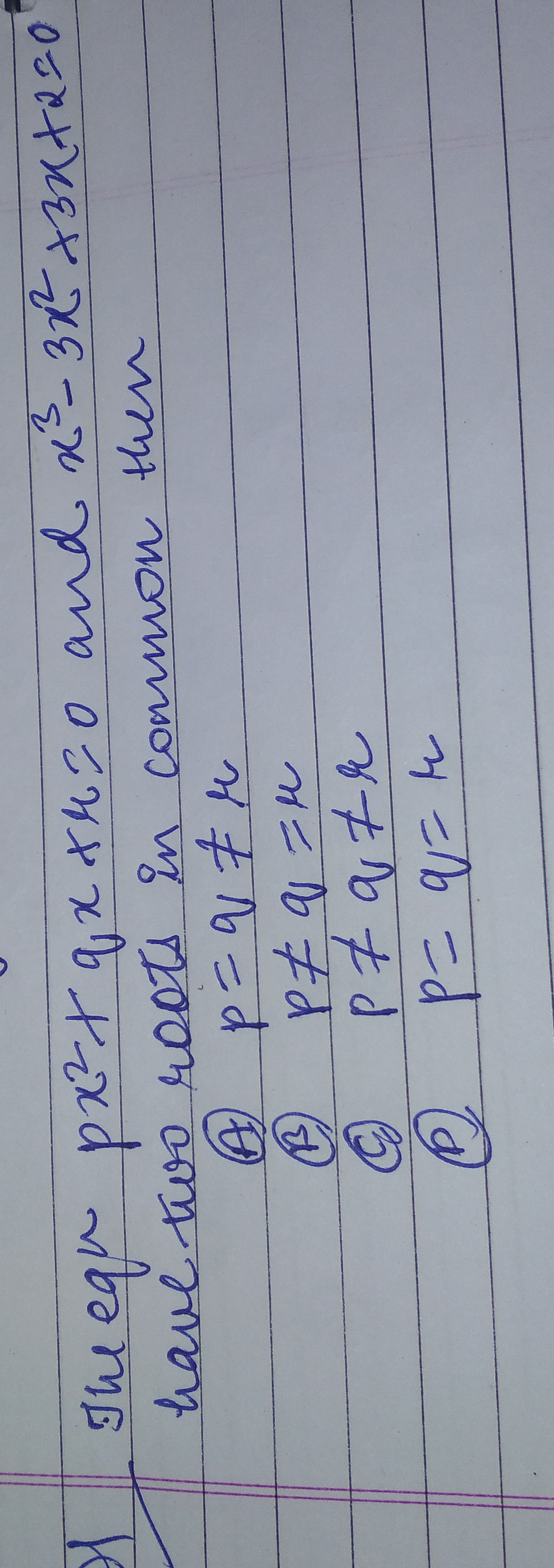Question
Question: The equ $px^2+qx+r=0$ and $x^3-3x^2+3x+2=0$ have two roots in common then...
The equ px2+qx+r=0 and x3−3x2+3x+2=0 have two roots in common then

p=q≠r
p≠q=r
p≠q≠r
p=q=r
p=q≠r
Solution
Let the two equations be: (1) px2+qx+r=0 (2) x3−3x2+3x+2=0
Rewrite equation (2) as (x−1)3+3=0, which gives (x−1)3=−3. Let y=x−1. Then y3=−3. The roots for y are k,kω,kω2, where k is a cube root of −3 and ω is a complex cube root of unity. The roots for x are 1+k,1+kω,1+kω2. Since the coefficients of the quadratic equation are real, its two common roots with the cubic equation must be the complex conjugate pair: α=1+kω and β=1+kω2.
Using Vieta's formulas for px2+qx+r=0: Sum of roots: α+β=(1+kω)+(1+kω2)=2+k(ω+ω2)=2+k(−1)=2−k. So, −q/p=2−k.
Product of roots: αβ=(1+kω)(1+kω2)=1+k(ω+ω2)+k2ω3=1+k(−1)+k2(1)=1−k+k2. So, r/p=1−k+k2.
From −q/p=2−k, we get k=2+q/p. Substitute this into r/p=1−k+k2: r/p=1−(2+q/p)+(2+q/p)2 r/p=−1−q/p+4+4q/p+q2/p2 r/p=3+3q/p+q2/p2 Multiply by p2: rp=3p2+3pq+q2.
Check option Ⓐ (p=q=r): If p=q, the equation becomes rp=3p2+3p(p)+p2=7p2. Since p=0, we can divide by p: r=7p. This means p=q and r=7p. If p=0, then p=r. Thus, p=q=r is consistent.
